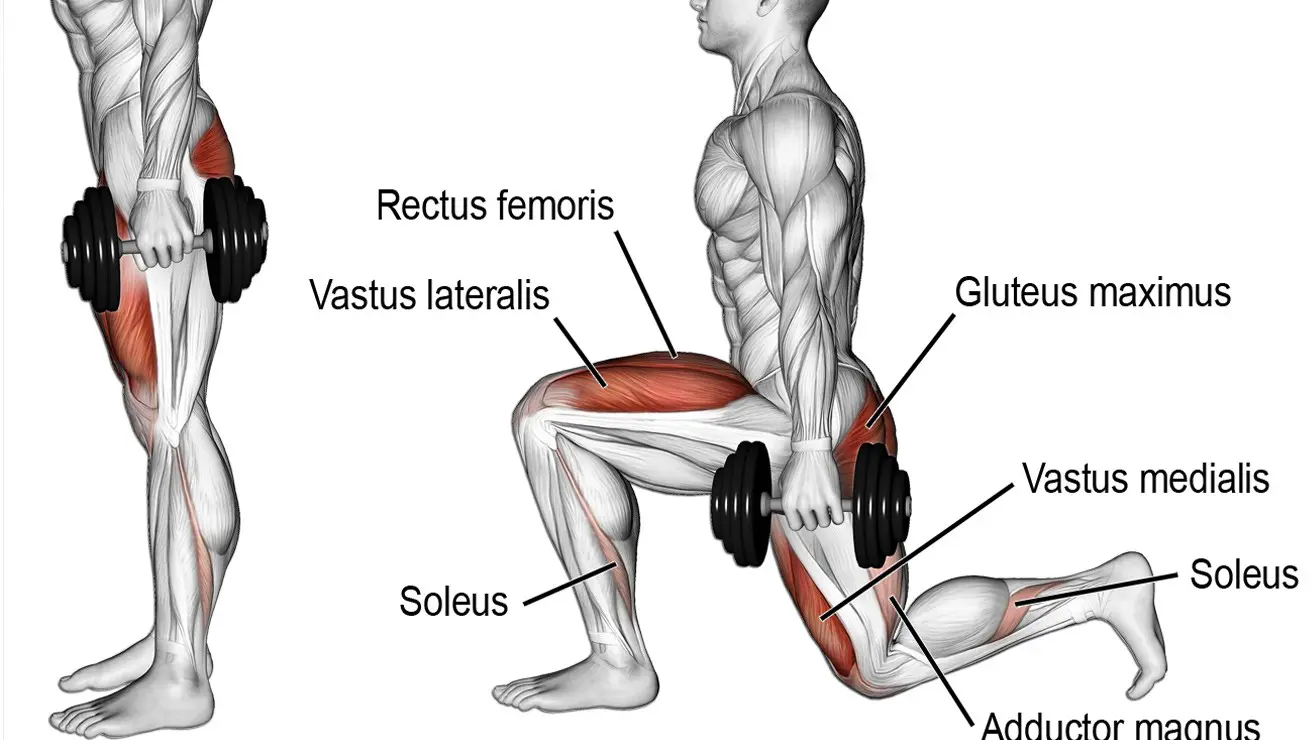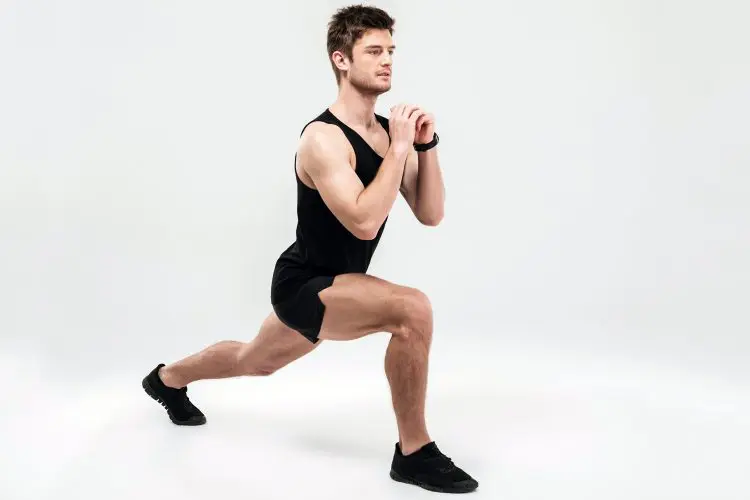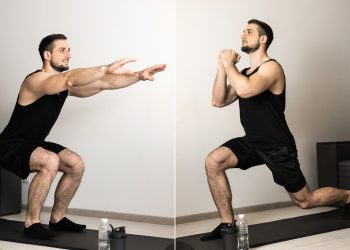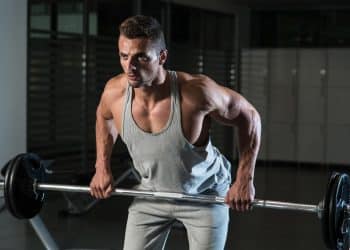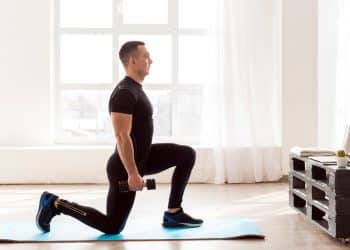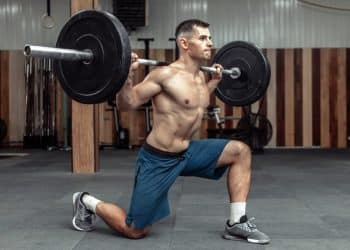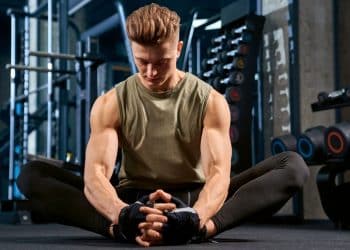If you want to develop strong, muscular legs, exercises like barbell squats, leg presses, and Romanian deadlifts need to be a big part of your lower body workouts. After all, these exercises allow you to lift heavy weights in relative safety, overloading your muscles and triggering increases in size and strength.
However, while bilateral or two-legged exercises are very effective, they also have drawbacks. It’s all too easy to use one leg more than the other, creating left-to-right muscle strength and size imbalances. Also, bilateral exercises are not always very functional. After all, many of life’s most strenuous activities take place one leg at a time – such as running, climbing stairs, kicking, and jumping.
Because of this, most people, regardless of their training goal, should do unilateral or single-legged exercises as well as the more common bilateral moves.
Unilateral exercises will ensure that both of your legs are developed equally and that at least some of your strength can be used outside of the gym.
There are plenty of great unilateral leg exercises and knowing which to choose is not always easy. So, in this article, we’re going to compare and contrast split squats and lunges, so you can pick the best one for your needs.
Split Squat
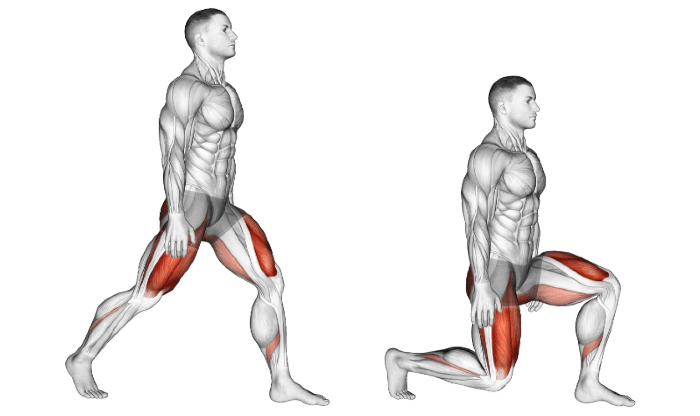
Split squats are one of the most basic unilateral leg exercises. Done with your feet stationary, they’re a great introduction to single-leg training. In fact, it could be argued that split squats are a semi-unilateral leg exercise as both feet remain on the floor throughout. However, with more weight on your front leg, they’re more of a unilateral exercise than they are a bilateral move.
Level Up Your Fitness: Join our 💪 strong community in Fitness Volt Newsletter. Get daily inspiration, expert-backed workouts, nutrition tips, the latest in strength sports, and the support you need to reach your goals. Subscribe for free!
Exercise classification arguments aside, split squats are good for preventing left-to-right strength imbalances, improving functional strength, and building a more muscular lower body.
Muscles Worked
Split squats are a compound exercise, which means they involve several joints and muscles working together. The main muscles trained during split squats are:
- Quadriceps – front of the thigh
- Hamstrings – rear of the thigh
- Gluteus maximus – rear of the hip
- Adductors – inner thigh
- Abductors – outer hip and thigh
When doing split squats, roughly 70% of your weight is on your front leg and 30% on your back leg. However, it’s possible to shift your weight forward or backward, so these percentages are not set in stone.
How to do split squats
- Stand with your feet together and your arms by your sides. Look straight ahead and stand up tall in good posture.
- Take a large step forward and then stop.
- With your abs braced and your torso upright, bend your legs and lower your rearmost knee down to within an inch of the floor. Your front shin should be close to vertical and your leading knee behind your toes.
- You should feel that about 70% of your weight is on your front leg.
- Without moving your feet, stand back up, pause, and then descend again.
- Keep going until you have completed the prescribed number of reps.
- On completion, either step forward or backward to bring your feet back together.
- Rest a moment and then repeat on the opposite leg.
Split Squat – Pros
Not sure if split squats are the right exercise for you? Consider these benefits:
Easy on your knees – split squats involve a very controlled movement. Because you don’t have to worry about swapping feet rep-by-rep, you’re free to concentrate on keeping your front shin vertical and doing the exercise with perfect form. As such, split squats are a good exercise for those suffering from some types of knee pain.
Easy to balance – compared to more dynamic single-leg exercises like pistol squats, Bulgarian split squats, and single-leg Romanian deadlifts, split squats don’t need gymnastic levels of balance to perform them correctly. Instead, you’re free to focus on working your legs without constantly worrying about falling over.
No equipment required – while you can do split squats with weights, you can also do them using just your body weight for resistance. As such, they’re ideal for home workouts and using as a bodyweight-only finisher after doing squats, leg presses, or other weighted leg exercises.
Moderate range of motion – some unilateral leg exercises require excellent mobility to do them properly. The range of motion with split squats is more reasonable, as your rear knee will touch the floor to limit how far you can descend. If you aren’t flexible enough to do Bulgarian split squats, this variation could be a better, more comfortable option.
Safe – even done with weights, split squats are a very safe exercise. Your torso remains relatively upright, which minimizes lower back stress, and the controlled movement means you should have no problem maintaining optimal joint alignment. However, if you tend to lose your balance during split squats, use dumbbells instead of a barbell, so your hands are free if you need them.
Split Squat – Cons
While split squats can be a beneficial and safe exercise, they’re not without drawbacks, too:
Limited range of motion – while this may be an advantage for some exercisers, it’s a drawback for others. If you’ve got good flexibility, touching your knee to the floor could feel like you are doing half a rep. The good news is that it’s easy to increase your range of motion, either by raising your front and back foot or switching to Bulgarian split squats, where your back foot is on a bench behind you.
You won’t be able to lift much weight – compared to squats, leg presses, and other bilateral exercises, you won’t be able to lift as much weight when doing split squats. As such, they’re not a good exercise for developing maximal strength. While you can do them with weights, you’ll almost always be able to lift heavier loads when you work both legs at a time.
Lunges
Lunges are similar to split squats, but each rep starts and finishes with your feet together. They’re usually done using an alternating leg action, but that’s not always the case. There are several lunging variations, including forward, backward, walking, lateral, and curtsey lunges.
Because lunges involve more movement, they require better balance and coordination than split squats. They’re not an advanced exercise, but they are technically more demanding than more stationary split squats.
However, if you are looking for a progression from split squats, lunges are a good choice.
Muscles Worked
Lunges work the same muscles are split squats, i.e.,
- Quadriceps – front of the thigh
- Hamstrings – rear of the thigh
- Gluteus maximus – rear of the hip
- Adductors – inner thigh
- Abductors – outer hip and thigh
Because you’ll need to work somewhat harder to maintain balance and stability, lunges involve a little more hip adductor and abductor engagement than split squats.
How to do lunges
- Stand tall with your feet together and your hands by your sides. Look straight ahead and not down at the floor. Brace your abs.
- Take a large step forward and into a split stance.
- Bend your legs and lower your rearmost knee to within about an inch of the floor. Do not let it touch down.
- Your front shin should be vertical or very close to it. Do NOT let it move past your toes, as doing so puts a lot of stress on the knee joint.
- Your rear thigh should also be close to vertical.
- About 70% of your weight should be on your front leg.
- Push off your front leg and return to the starting position.
- Do all your reps leading with the same leg or alternate legs as preferred.
Lunges – Pros
Are lunges the best exercise for you? Consider these benefits and then decide:
Better sports performance – there are very few bilateral athletic movements, with rowing, powerlifting, and Olympic weightlifting being the main exceptions. All of the rest are unilateral movements. Lunges are an especially big part of most racket sports, such as tennis. If you play any sport, your workouts should include lunges. Lunges are one of The 12 Best Strength Training Exercises for Runners.
Improved hip mobility – lunges involve a large range of motion, especially for your hips. This provides the surrounding muscles with a beneficial stretch. Better hip mobility can help reduce hip pain, reduce your risk of hip injuries, and also increase functionality.
Level Up Your Fitness: Join our 💪 strong community in Fitness Volt Newsletter. Get daily inspiration, expert-backed workouts, nutrition tips, the latest in strength sports, and the support you need to reach your goals. Subscribe for free!
Less knee pain – done correctly, lunges are generally easier on your knees than squats and leg presses. If you’ve got painful knees, lunges could be one of the few exercises you can do without discomfort. However, some lunge variations are more knee-friendly than others, such as reverse lunges.
Better joint stability and balance – lunges involve a lot of weight transference as you move from one rep to the next. This will help increase joint stability. More stable joints are less prone to injury and can also enhance sports performance.
The movement and weight shifts in lunges are also good for improving balance. Balance is best defined as your ability to keep your weight over your feet and is an integral part of most sports as well as many of the activities of daily living.
Safe – like split squats, lunges are a very safe exercise. There is minimal stress on your lower back, even if you do your lunges with weights. Use dumbbells rather than a barbell to make them even safer. Maintaining your balance with a barbell on your back is more demanding than with weights in your hands.
Lunges – Cons
Lunges are a great exercise, but they aren’t without drawbacks, so consider these cons before adding lunges to your workouts:
Too much forward knee travel – with lunges, you need to turn a forward movement into a downward movement without letting your knees travel beyond your toes. Too much forward knee travel can cause knee pain. Some exercisers find this difficult to do.
Harder to maintain balance – with more movements to coordinate, some exercisers may find it hard to keep their balance during lunges. Losing balance could put more strain on your joints or just detract from your workout. However, balance is highly trainable and should improve in time.
Hip hyperextension – some exercisers keep their rear leg too straight when doing lunges or take an overly large step forward. This is a mistake that could lead to hip pain and joint and muscle injuries. Make sure you bend your front AND back leg to prevent hip hyperextension. After all, we’re doing lunges mainly for their muscle strengthening effect and not as stretches.
Split Squat vs. Lunge
So, now that you know a little more about split squats and lunges, let’s judge these two exercises by a few different criteria:
Strength
Neither split squats nor lunges are good for building maximal strength. It’s not a good idea to do either of these exercises with very heavy weights. If you lose your balance with a heavy weight, it could cause serious injury to your joints.
So, don’t think of lunges or split squats as strength builders. Instead, use them to develop muscle mass and endurance.
Hypertrophy
Split squats and lunges are both useful hypertrophic or muscle-building exercises. Using moderate weights and done for medium reps, typically 8-15 per leg, both of these exercises will provide the muscle tension and metabolic overload necessary to trigger increases in muscle size.
Is one better than the other? Probably not. Split squats and lunges work the same muscles, so there isn’t much to choose between them. Ultimately, you should do both and see which one works best for you.
Safety
Done correctly, split squats and lunges are both very safe exercises. Your torso remains pretty upright, so there is not much lower back stress to worry about, even if you use weights.
That said, split squats tend to involve a more controlled movement, and it’s easier to make sure your front shin remains vertical, so there is potentially less knee joint stress, too. That means split squats are a little safer than lunges, but the difference is really very small.
Ease of learning
Between split squats and lunges, split squats require less coordination and balance. Because your feet remain stationary, you are free to focus on lowering your rear knee down and standing back up again. They also teach you how to keep your front shin vertical, which is important for reducing knee joint stress. This all means that split squats are usually easier to learn than lunges.
Equipment
Both split squats and lunges can be done as straightforward bodyweight exercises. You can also do them with dumbbells. Many exercisers are also happy to do split squats and lunges with a barbell. However, that does make balancing more of a challenge. Regardless, split squats and lunges use the same amount of equipment, i.e., very little!
Variety
One of the best ways to avoid training ruts is to change your workout from time to time and use variations of your main exercises. In many cases, simply altering the width of your stance or the angle of your bench is all that’s needed to avoid progress plateaus.
While switching from split squats to lunges or vice versa is an excellent way to add some variation to your workout, both exercises can be done in several different ways to ensure that you keep making progress, e.g.:
- Bulgarian split squats
- Deficit split squats
- Paused split squats
- Smith machine split squats
- Split squat jumps
- Walking lunges
- Reverse lunges
- Deficit lunges
- Lateral lunges
- Curtsey lunges
- Step-through lunges
- Rotational lunges
- Walking lunges
While there are plenty of variations of both exercises, there are more options for lunges.
Split Squat vs. Lunge – Wrapping Up
Split squats and lunges are both great exercises, but is one better than the other? They are very similar and, for many exercisers, could even be seen as interchangeable. After all, they involve almost the same movement and all of the same muscles.
The main difference, then, is the need for balance and coordination, with lunges being the more technically demanding exercise. As such, split squats are probably better for beginners, while lunges are more suited to intermediate and advanced exercisers.
That said, even if you are new to unilateral training, you’ll soon master split squats and will be ready for lunges in no time at all.
Because they’re so similar, you may be unable to decide which one is best. In that case, just do both. Doing split squats and lunges in the same workout is probably overkill, as they overlap so much. But, doing lunges one day and then split squats a few days later would be an excellent way to enjoy all the benefits these exercises have to offer.
Either way, adding some unilateral exercises to your leg workouts is a must to eliminate imbalances and maximize functionality. Split squats or lunges would be a great option.
Interested in measuring your progress? Check out our strength standards for Bulgarian Split Squat, Deadlift, Romanian Deadlift, and more.


